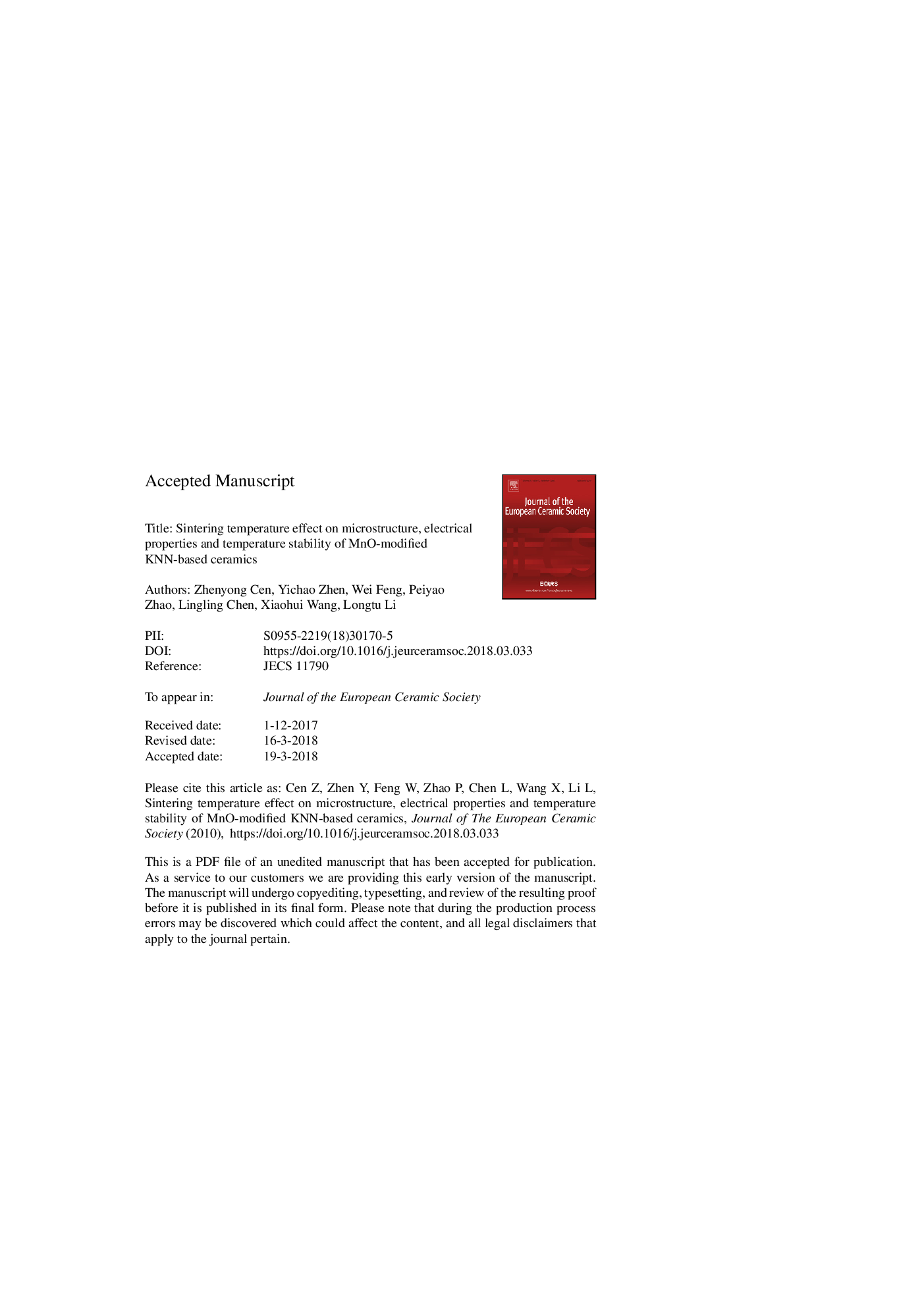| Article ID | Journal | Published Year | Pages | File Type |
|---|---|---|---|---|
| 7898154 | Journal of the European Ceramic Society | 2018 | 37 Pages |
Abstract
Lead-free 0.955K0.5Na0.5NbO3-0.045Bi0.5Na0.5ZrO3â¯+â¯0.6%MnO (KNN-0.045BNZâ¯+â¯Mn0.6) ceramics have been prepared by a conventional solid-state sintering method in air. All the samples sintered at different temperatures possess a coexisting phase boundary (CPB) between rhombohedral (R) phase and tetragonal (T) phase. The increase of sintering temperature (Ts) increases the phase fraction of T phase in CPB region. Mn2+, Mn3+ and Mn4+ ions coexist in all the KNN-0.045BNZâ¯+â¯Mn0.6 ceramics sintered at 1110â¯Â°C to 1190â¯Â°C. High sintering temperature can induce a transformation from MnNb'' defects to MnNb' defects. The samples with fine grain show stable octahedral structure. The KNN-0.045BNZâ¯+â¯Mn0.6 ceramics with fine grain possess excellent temperature stability of d33* due to the wide phase transition region. The increase of sintering temperature induces the (R-T) phase transition temperature to move to room temperature.
Keywords
Related Topics
Physical Sciences and Engineering
Materials Science
Ceramics and Composites
Authors
Zhenyong Cen, Yichao Zhen, Wei Feng, Peiyao Zhao, Lingling Chen, Xiaohui Wang, Longtu Li,
